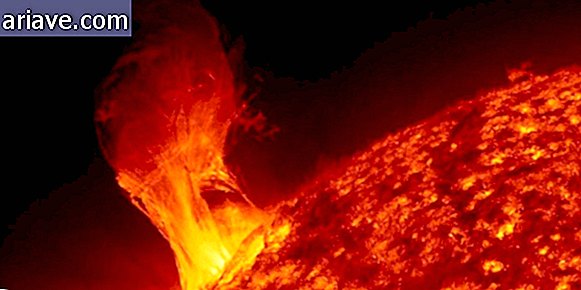See what are the 6 places on earth that seem to be from another planet
Although we see the images that space probes record of space, distant stars and galaxies, moons, and not-so-distant neighbor Mars, it is common to forget that our own planet Earth has stunning and desolate landscapes - that if we look closely at them. don't even seem to be near here.
Before we travel millions of kilometers in the emptiness of space, we must know these very peculiar places of our world, who knows to better understand the space. Space agencies test their vehicles on unfamiliar terrain before sending them to other planets, so certain Earth locations are used for these experiments - places that are relatively similar to the landscapes of the Moon or Mars.
Last month, the European Space Agency released a guide to these places, including regions with large craters, desert areas, volcanic scenery, tundra vegetation and many others. Below are some of the Earth locations that resemble land that we may find outside our blue planet:
1 - Blood Falls in Antarctica


Located in front of the Taylor Glacier, we can see these frozen, red-colored waterfalls - which gives the place its name Blood Falls, like a red river flowing out of the glacier. Scientists could not agree on the reasons for this peculiar phenomenon, but living microorganisms were found in the region (and the coloration is probably due to their activity).
Blood Falls is in one of the most arid deserts in the world, and despite all the ice in the area, it never snows in this Antarctic region. According to the book released by the European Space Agency, this is the most Mars-like place we can find on Earth.
2 - Atacama Desert



The Atacama Desert in northern Chile and southern Peru has one of the harshest environments on earth (almost lifeless in certain regions), much like what scientists believe is the terrain of Mars.
Due to the sandy environment, only a few types of bacteria can survive the extreme desert conditions, very hot at day (over 40 ° C in a few months) and quite cold at night (with temperatures ranging from 0 ° C to below).
3 - Askja Volcanic Crater in Iceland


Askja is Iceland's largest volcanic crater and has a dazzling and somewhat alien look with its ethereal blue waters and reddish soil. Volcano eruptions stopped more than 100 years ago, which gives the region a safer status. Iceland in general is a very interesting country for scientific study of space travel, as the island has areas full of glaciers, volcanoes and arid terrain. For example, Askja was used for training in Apollo missions.
4 - Etna Volcano


Unlike Askja (which has not erupted in decades), Etna is very active in Italy. The sandy terrain, coupled with the extreme conditions afforded by the eruptions, creates a truly interesting environment for scientific study and robotic testing for moon or Mars missions. Although missions to Venus are a long way from reality, researchers use Etna as an analogy to the volcanic activity of the planet.
5 - Namibian Desert



This African desert is characterized by the high dunes that can exceed 300 meters in height and extends along the coast of Namibia and Angola. Dunes of these sizes (and much higher) are found on Mars, a commonality between these two distinct regions - and this is the only desert on Earth that can be compared to the dunes on Mars.
6 - Pavilion Lake



Pavilion Lake may look normal if you see it like this from the surface, without any major differences from the other lakes we find on Earth. However, it is beneath the waters of the Pavilion that something extraterrestrial geology specialists resides. In the lake soil there are rare stromatolite formations, which are types of rocks and fossils formed by microorganisms in aquatic environments. Owning these stromatolites, the site attracts dozens of scientists.











